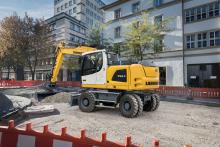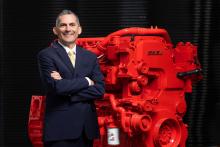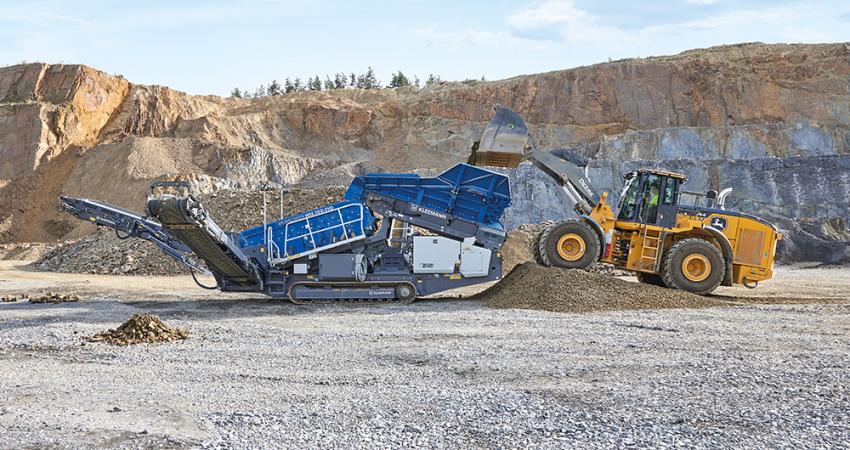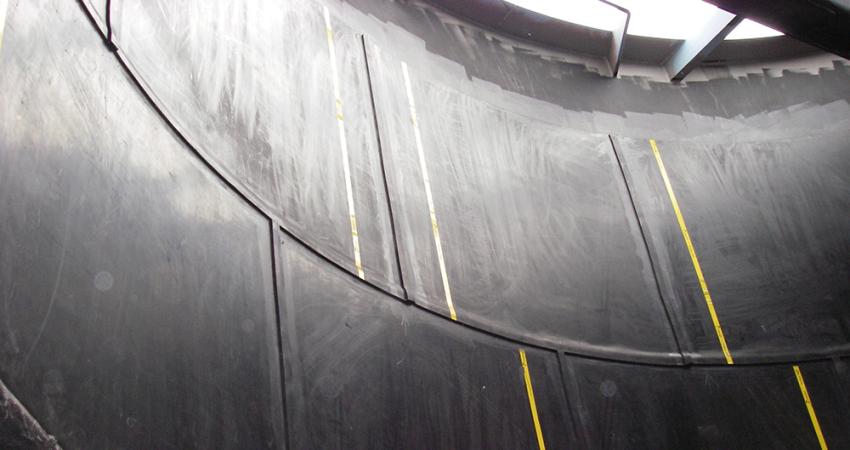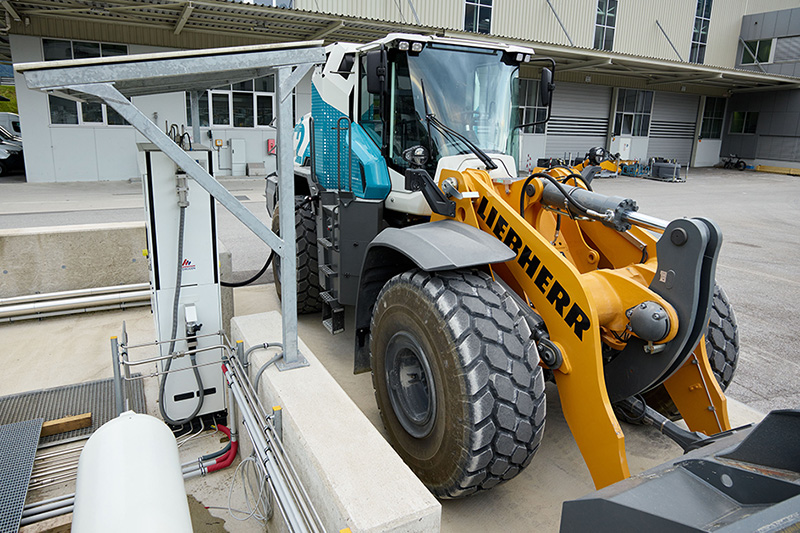
The world's first large wheeled loader to use hydrogen as a fuel was presented to attendees, including representatives from politics and business. The event included a series of talks on the topic of alternative drives. However, the focus was on the hydrogen-fuelled wheeled loader, which was demonstrated in public for the first time.
At the same time as this world première, the first hydrogen filling station in the state of Salzburg was inaugurated, representing an important step in the use of hydrogen as a sustainable energy source. "To make progress in hydrogen research, we need to have access to hydrogen. We built this filling station to further advance our goals for decarbonising construction machinery," said Dr-Ing Herbert Pfab, chief technical officer of Liebherr Bischofshofen.
The L 566 H from Liebherr is the world's first prototype large wheel loader with a hydrogen engine. Following extensive studies, this groundbreaking technology was identified as the optimal solution for operating large vehicles that are difficult to electrify without CO2 emissions.
For smaller machines, battery-electric solutions are often suitable. However, the situation is different with larger machines with an operating weight of up to 40tonnes and high energy requirements, internal combustion engines fuelled by hydrogen offer many benefits.
These hydrogen engines are manufactured at the engine plant of Liebherr's Components product segment in Bulle (Switzerland). They enable zero emissions of greenhouse gases from the tailpipe and almost no nitrogen oxides. They are also highly efficient. Another advantage is that the interfaces are comparable to those of a diesel engine - thermally and mechanically. This represents a significant step forward in the development of sustainable large-scale machinery.
As part of the development of the hydrogen wheeled loader, Liebherr Bischofshofen opened its own hydrogen filling station, the first of its kind in the state of Salzburg. An important strategic partner in this project is Maximator Hydrogen, which is not only the manufacturer of the newly opened filling station, but also a research partner of Liebherr. Together, they are working on mobile filling facilities so that machinery can be refuelled directly at the construction sites. This is particularly important for remote construction sites and machines that are not very mobile.
Another reliable partner is MPREIS, which ensures the supply of green hydrogen. This is important because only through emission-free production, using wind, hydroelectric or solar energy, can hydrogen play a key role as a sustainable energy source.

